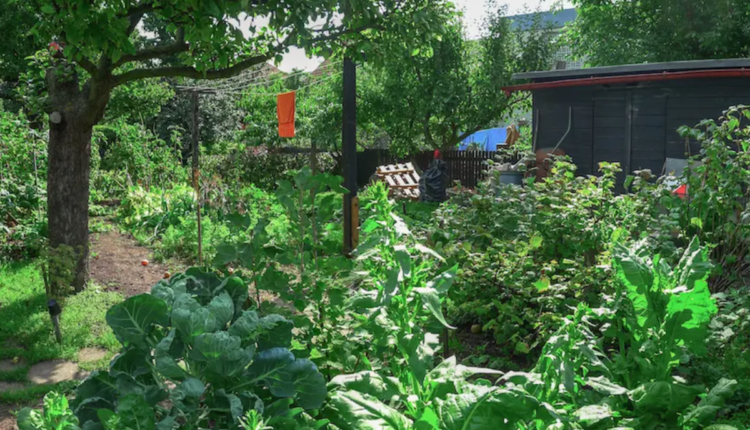Mung Ki Kheti: Advanced sowing and management method in moong cultivation, know from expert Dr. RP Sharma
Mung Ki Kheti | Moong dal has been sown in many parts of the country. Moong dal is the main crop among pulse crops. Moong is sown in the Zaid season. Many types of questions arise in the minds of farmers regarding the cultivation of moong dal. Which variety of moong is good? How to start moong cultivation? We got the answers to all these questions from Dr. RP Sharma, scientist of Krishi Vigyan Kendra, Madhepura, Bihar. He answered the questions commonly raised on moong dal cultivation.
Moong is a pulse crop. Moong is cultivated as a summer pulse. By cultivating moong, the soil of one acre of land receives about 50 to 55 kg of nitrogen. Along with this, for the cultivation of moong, the time for sowing is selected from the last week of February to the first week of April. If we talk about the farmers of Bihar, then many farmers cultivate moong after removing potatoes from the field. This is called early cultivation. In the Kosi region of Bihar, farmers plant the local seed variety of moong after harvesting wheat, which gives good yield.
How to prepare the field before sowing moong?
Fields with any type of soil can be prepared. To prepare the field for moong, one to two plowings should be done. The first plowing should be done with a deep plow. The second plowing should be done with a cultivator. By doing deep plowing, the insects hidden in the soil die. This reduces the chances of pests infesting the crop.
Main varieties of moong dal (Moong Varieties In India)
First of all, seeds of improved varieties of moong should be selected. Moong should be sown between 15th February and 15th March. The yield of Pusa Vishal is 15 to 16 quintals per acre. This crop gets ready in 65 to 70 days.
If farmers use the variety PDM m 40 (Samrat) for sowing moong between 10th March and 10th April, then this variety gets ready in 60 to 65 days. Its production is 12 to 15 quintals per acre. This variety is resistant to Halo Maurya Ben virus.
Along with this, SM L Phoso 68 variety can also be sown from 15th March to 10th April. This variety also gets ready in 65 to 70 days. The yield is 15 to 40 quintals per hectare.
The new variety of moong- Moong IPM 205-07 which comes in the name of Virat, can be sown between 15 March to 10 April. This is a short duration crop. This variety gets ripe in 52 to 56 days. Its production is 10 to 12 quintals per acre.
If we talk about IPM 410 Shikha variety, then it also gets ripe within 65 to 70 days. 11 to 12 quintals can be produced from this variety.
How many seeds are required per hectare in moong cultivation?
Farmer friends, we just told you about the improved varieties of moong, so now the question must be coming in your mind that how many seeds are needed in one acre? Dr. RP Sharma tells that 25 to 30 kg of seeds should be used per hectare. If it is small grain moong then we use 25 kg per hectare. Large moong seeds are used at the rate of 30 kg per hectare.
How to select moong seeds?
Dr. R.P. Sharma says that along with the seed, penetration should always be taken care of. Along with this, it is also very important to take care of the quality of the seed. What is the germination capacity of the seed? This is also important to see. If the seed has more than 80 percent germination capacity, then only we should use it as seed. In such a situation, Aadhaar and certified seeds are available in the market.
Farmers who plant Aadhaar seeds can use the same seed for three years. Certified seeds can be used by farmers only once. Maximum two times.
Attention should also be paid to the treatment of seeds. Seeds should be used with rhizobium culture. To protect from soil and seed borne diseases, if you treat with Trichoderma, then use it at the rate of five grams per kg. If you treat with Carbendazim, then use it at the rate of two grams per kg. After this treatment, treatment with Rhizobium should be done after 12 to 18 hours. With the treatment of seeds, the production of the crop increases. Along with this, the fertility of the field also increases. In the moong crop, a dose of nitrogen is given in the starter zone. In this, 20 kg of nitrogen and 40 to 50 kg of phosphorus should be used.
Distance between moong plants
Dr. R.P. Sharma says that the distance between rows is kept 30 centimeters. At the same time, the distance between plants is kept 20 centimeters.
Weed control in moong cultivation
To control weeds in moong cultivation, we should use weedicide called pendimethalin within three days of sowing. It should be used at the rate of 3.3 liters per hectare. After sowing, we will spray pesticides. The field where spraying has been done should not be stepped on. Due to stepping on the pesticide layer breaks. Due to breaking of the layer, weeds come out again, along with this, 1200 liters of water should be used in one acre for spraying. If weeds are to be eliminated in standing moong, then weedicide called imizathifer should be used. This controls the weeds within thirty days.
Irrigation in moong cultivation
There is no need for much irrigation in moong cultivation. If it rains once, then there is no need for irrigation. If it does not rain, then one or two irrigations are enough and if light irrigation is done by sprinkler method, then the yield increases.
Plant protection in moong cultivation
To protect moong plants, farmers should do deep ploughing before sowing. This destroys the hidden pests and weeds in the field. Seed treatment is very important for plant protection. If treatment is done with Trichoderma, then use it at the rate of five grams per kilogram. If treatment is done with Carbinda Jim, then use it at the rate of two grams per kilogram. At the time of sowing, the distance between the plants and the distance between the rows should be taken care of. At the time of sowing, the moisture of the soil should be taken care of.
There is also a possibility of pest attack in the moong crop. Many types of diseases occur during the flowering of moong. To avoid this, light traps are used. This will kill many types of insects like white fly, stem borer fly, fruit borer, caterpillar, spotted leaf borer, sap sucking insect. Bio pesticides are used to prevent pests, if bio pesticides are not successful then one should go for chemicals. If we talk about diseases, then jaundice disease, virus outbreak is also seen. To avoid leaf kinkl, fungal disease, copper oxyride should be dissolved in two grams per liter of water and sprayed.
Which things should be kept in mind while harvesting moong?
While harvesting moong, one has to keep in mind that there are two types of moong. In one type of moong, all the beans ripen together. In some varieties, one pod ripens at a time and it is plucked. This process is done up to three plucking. The beans turn black when ripe. After this, harvesting should be done. To store moong, neem leaves should be kept at the place where moong is being kept. This prevents insect attack. After harvesting, bury the remains of moong cultivation inside the ground so that it can work as green manure in the field. This increases the amount of nitrogen in the soil of the field.
How much help does KVK provide to farmers in moong cultivation?
Dr. R.P. Sharma tells that Krishi Vigyan Kendra provides seeds to farmers for the promotion of pulses under group demonstration. KVK Madhehpura has been providing seeds to farmers for the last five years, along with this it also provides medicines. This can expand the cultivation of pulses.
Contact us- If farmers want to share any valuable information or experiences related to farming, they can connect with us via phone or whatsApp at 9599273766 or you can write to us at [email protected]. Through Kisan of India, we will convey your message to the people, because we believe that if the farmers are advanced then the country is happy.
You can connect with Kisan of India on Facebook, Twitter, and WhatsApp and Subscribe to our YouTube channel.



